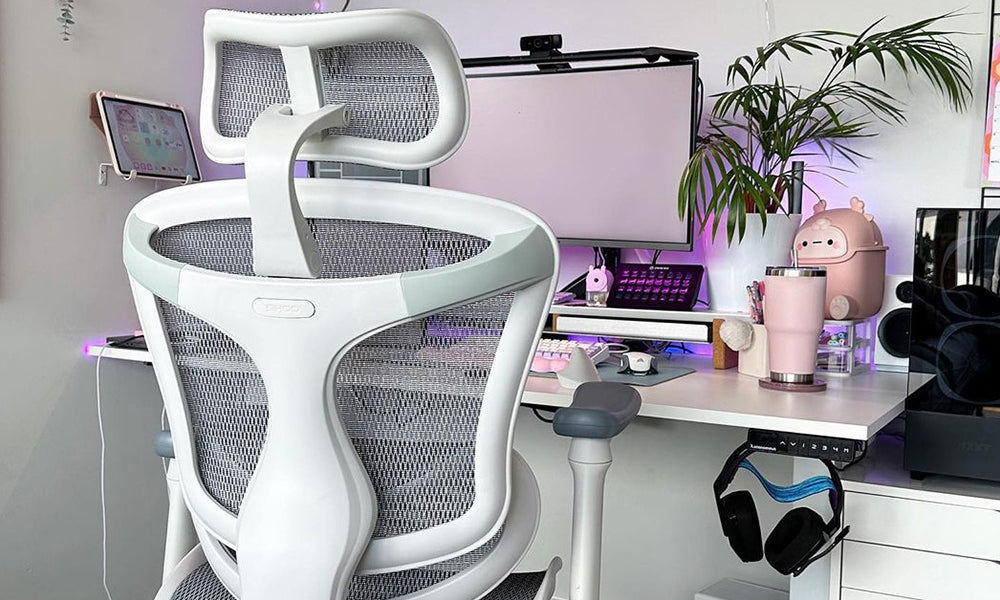Office chairs are a staple in any workspace, yet many people underestimate their importance. An unsuitable office chair can lead to discomfort, health issues, and decreased productivity. But what exactly makes an office chair bad? Let's dive into the key factors that contribute to an inadequate office chair and how they impact your well-being and efficiency.
1. Lack of Ergonomic Design
One of the most critical aspects of a good office chair is its ergonomic design. A chair that lacks ergonomic features fails to support the natural curvature of your spine, leading to poor posture. Without proper lumbar support, your lower back experiences undue stress, potentially causing chronic back pain. Additionally, a poorly designed chair might not offer adjustable settings for height, armrests, and backrest angle, preventing you from customizing the chair to your body's needs. This lack of adjustability forces you to sit in unnatural positions, which can lead to musculoskeletal issues over time.
2. Insufficient Padding and Cushioning
Comfort is paramount when it comes to office chairs. Chairs with insufficient padding and cushioning can cause discomfort after short periods of sitting. Hard seats put pressure on your sit bones, leading to pain and numbness. Inadequate padding on the backrest can also result in discomfort, as it doesn't provide enough support for your upper and middle back. Over time, sitting on a poorly cushioned chair can lead to fatigue and decreased productivity, as you're constantly shifting to find a more comfortable position.
3. Poor Quality Materials
The materials used in constructing an office chair play a significant role in its overall quality and durability. Chairs made from low-quality materials are prone to wear and tear, reducing their lifespan. For instance, a chair with a flimsy frame or base may wobble or break, posing a safety risk. Similarly, cheap fabric or synthetic leather can wear out quickly, leading to an unsightly and uncomfortable seating surface. Investing in a chair made from high-quality materials ensures longevity and consistent comfort, making it a worthwhile investment in the long run.
4. Inadequate Support for Different Body Types
A good office chair should accommodate various body types and sizes. Chairs that are too small or too large for the user can cause significant discomfort. For instance, a chair with a seat that's too short may not support your thighs properly, leading to pressure points and circulation issues. Conversely, a seat that's too deep can cause you to slouch, straining your back and neck. Similarly, armrests that are not adjustable or are positioned too high or low can result in shoulder and arm discomfort. An office chair that doesn't cater to different body types fails to provide the necessary support for all users.
5. Limited Mobility and Flexibility
Mobility and flexibility are essential features of a good office chair. Chairs with poor mobility can hinder your ability to move freely around your workspace. For example, a chair with wheels that don't roll smoothly or lock mechanisms that frequently jam can be frustrating to use. Flexibility in the chair's backrest and seat tilt is also crucial. A chair that doesn't allow you to recline or adjust the angle of the seat restricts your range of motion, which can lead to stiffness and discomfort during prolonged periods of sitting.
6. Inadequate Breathability
Breathability is often overlooked but plays a vital role in overall comfort. Chairs with poor breathability trap heat and moisture, making you feel hot and sweaty, especially during long working hours. Upholstered chairs with non-breathable materials can exacerbate this issue. Mesh chairs, on the other hand, offer excellent breathability, allowing air to circulate and keeping you cool and comfortable. An office chair that doesn't prioritize breathability can make sitting for extended periods uncomfortable and distracting.
7. Aesthetic and Design Flaws
While functionality is paramount, the aesthetic appeal of an office chair should not be ignored. A chair that clashes with your office décor or looks outdated can impact the overall ambiance of your workspace. Additionally, design flaws such as sharp edges, protruding parts, or awkward shapes can pose safety hazards and reduce the chair's usability. A well-designed chair should combine functionality with aesthetics, contributing to a pleasant and cohesive office environment.
8. Lack of Maintenance and Repair Options
A bad office chair is one that requires frequent repairs or doesn't offer easy maintenance options. Chairs that are difficult to clean or have parts that are hard to replace can be a hassle to maintain. For example, a chair with non-removable cushions or a complex assembly process can make it challenging to keep the chair in good condition. Additionally, if spare parts are not readily available or if the chair lacks a warranty, you might find yourself replacing the chair sooner than expected. A good office chair should come with clear maintenance guidelines and accessible repair options to ensure its longevity and functionality.
Conclusion
A bad office chair is more than just an inconvenience; it can have serious implications for your health, comfort, and productivity. Lack of ergonomic design, insufficient padding, poor quality materials, inadequate support for different body types, limited mobility and flexibility, inadequate breathability, aesthetic and design flaws, and lack of maintenance and repair options all contribute to an unsatisfactory seating experience. When choosing an office chair, it's essential to consider these factors to ensure you invest in a chair that supports your well-being and enhances your work performance. Prioritizing a high-quality, ergonomic chair can make a significant difference in your daily comfort and long-term health.



































